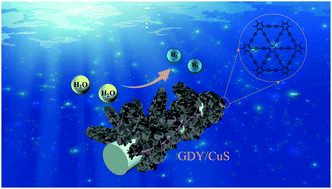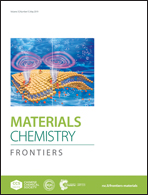In situ construction of graphdiyne/CuS heterostructures for efficient hydrogen evolution reaction†
Abstract
Carbon material coating is an effective strategy to improve the stability of electrocatalysts for the hydrogen evolution reaction, but it remains a challenge to achieve for electrocatalysts with effective coatings while maintaining high activity. Here, a “hitting two birds with one stone” method was adopted to fabricate graphdiyne-wrapped CuS nanosheets on Ni foam. The CuS nanosheets not only worked as the main catalyst towards the hydrogen evolution reaction but also acted as the co-catalyst for the in situ growth of graphdiyne, which led to a strong interaction between graphdiyne and CuS. In turn, graphdiyne could enhance the catalytic activity and stability of the composite. The designed heterostructure GDY/CuS catalyst exhibited an excellent HER activity that only required 106 mV to attain the current density of 10 mA cm−2 as well as an outstanding durability in an alkaline medium. It is believed that this study proposes a well-engineered heterostructure catalyst that possesses both a physically and electrochemically advantageous structure, which offers new insights in designing graphdiyne-coated electrocatalyst materials for various electrocatalytic applications.

- This article is part of the themed collections: 2019 Materials Chemistry Frontiers HOT articles and Celebrating the 100th anniversary of Nankai University


 Please wait while we load your content...
Please wait while we load your content...